How Are You Getting Along with Your Horse?
Linda Parelli from Happy Horse Happy Life – “It’s About the Relationship”
Our Professionals Help You Work on These Skills:
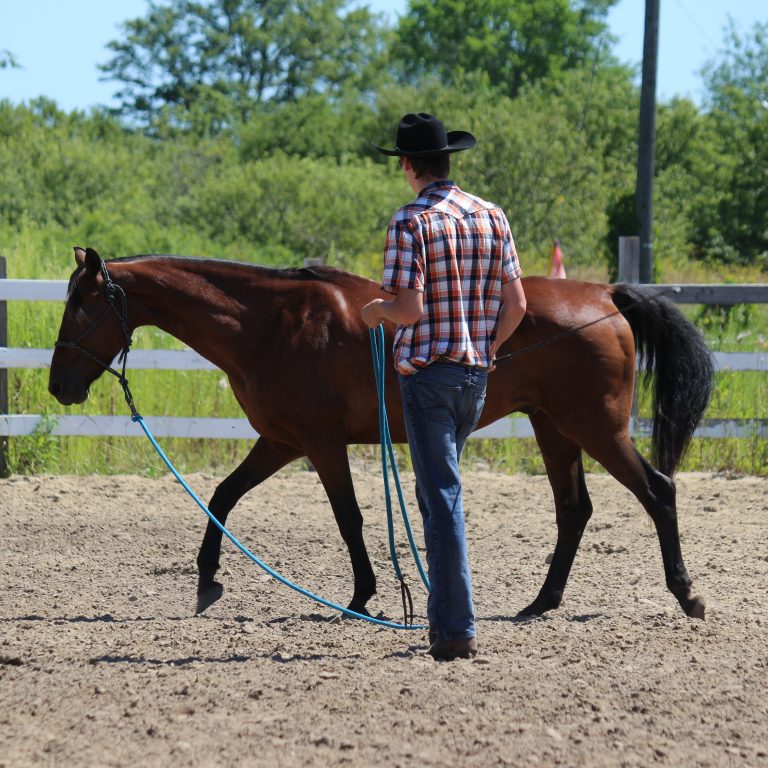 Ground Skills
Ground Skills
Ground skills are considered by many in the natural horsemanship industry to be one of the basic skills needed for better connection and communication with a horse. Before any connection can be made with a horse in the saddle, it must first be rooted on the ground.
Often, ground skills involve a variety of tools to help in developing a strong communication between horse and human. These include, but are not limited to, halters, neck ropes, natural horsemanship sticks (with or without a rope), and guiding ropes of varying lengths and weights. The purpose of these instruments, and of Ground Skills in general, is to develop trust, understanding, and a deeper bond with the horse. The goal is to create more positive responses from the horse that will transfer over when in the saddle, as well as stimulate the horse both mentally and physically to maintain their dignity and natural playful nature.
 Bridle Riding
Bridle Riding
The main goal of bridle riding is for a rider to guide the horse from the saddle with the use of voice and feel through hands and legs. Though bridle is in the name, a bridle is often used to develop a base communication with the horse. A bridle with a bit is considered is often used for lower levels, bit-less bridles are often used by mid-tier levels, and halters are considered high level as horse and rider are able to communicate so effectively through the softest of touches.
Bridled riding takes place on the back of the horse and riders can use a saddle, bareback pad or nothing at all when developing this skill. The focus is on learning to isolate different body parts of both rider and horse to communicate effectively and build confidence and trust. Other tools such as a stick, flag or dressage whip are also used, not to force the horse to move, but as an extension of the rider’s body to guide and support the horse.
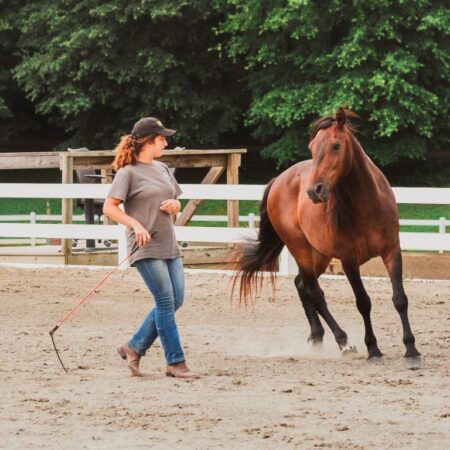 Liberty
Liberty
The ambition of Liberty is to create a bond with the horse that goes beyond small enclosures and lead ropes. Liberty skills involve working and connecting with the horse, on the ground, without the use of a halter or lead rope. With fewer tools, the human must guide the horse with energy, body language, and even sound.
Ideally, this skill is developed in much larger areas and the goal is to develop a much deeper understanding and connection between horse and human. In the larger area, both horse and human test their connection at greater distances with a variety of obstacles.
Horses, by nature, are herd animals. The objective of Liberty skills is to tap into that nature and make the horse feel safe and confident with the human, even from a distance. With the greater freedom of a large space and no halter/lead rope, the horse is encouraged to play, create, and improvise with their human companions.
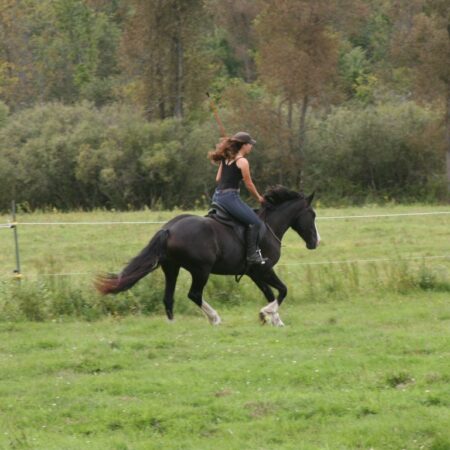 Free Riding
Free Riding
Free Riding, also know as bridleless riding, is to test the limits of the horse-human relationship while on horseback. Like liberty, which connects with a horse on the ground with a halter or lead rope, Free Riding seeks to connect with a horse without a bridle or reins. As little equipment as possible is used ranging from a stick and saddle to a neck rope and bareback pad. Without so many tools to use as leverage, the rider is pushed to communicate with the horse with their body rather than a bit.
The less pressure and the more connection there is, the higher the level of skill. Without a bridle, horses have the freedom to have an opinion and this is where riders practice encouraging their horse to match their own. Both horse and rider have to work together to communicate and complete the tasks at hand.
With so little leverage tools riders cannot force their equine partner and must instead be supportive, convincing, and confident to guide the horse effectively.
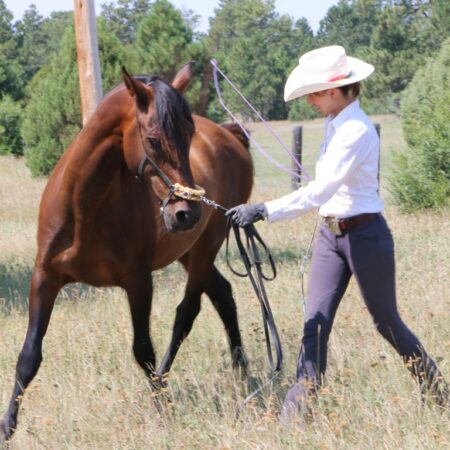 In-Hand
In-Hand
In-Hand can be considered one of the more basic skills, but as a rider’s skill increases they can accomplish many things with their horses that most of the equine world cannot. In-Hand is a preparation of contact between horse and rider before getting into the saddle. Any sort of head equipment can be used with this skill, from bit bridles to halters. Reins or short lines are also used as with as a stick with or without an attachment. In-Hand is an amazing skill to help horses learn flexion and proper placement of their bodies.
The precise goal of In-Hand training is to get horses used to connections, contacts, pressure, and form on the ground before a human is on their back. As humans, we are used to working with and feeling with our hands. In-hand skills allow us to use that skill to feel the horse and get the horse used to specific pressure before we have to use our legs, which we have less precise control over, when in the saddle. As human and horse increase their skills, the less pressure and movement will be needed to communicate.
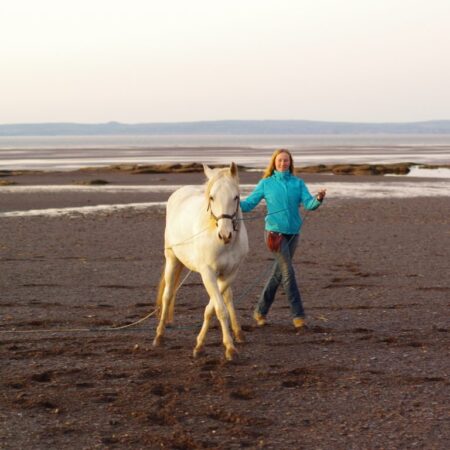 Long Lining
Long Lining
Long Lining is a proficiency most consider to be right in between Ground Skills and Liberty Skills. Long Lining introduces horse and rider to connectivity at a distance but still allows the use of a long-line to maintain a physical connection. A twenty-foot line is considard to be the minimum length for developing Long Lining skills. This length gives horse and rider more ability to attempt bigger maneuvers and guide the horse without the leverage of being able to touch them directly. A stick, with or without a string can be used to give more exaggerated cues so the horse is able to understand more effectively. The fewer items of equipment used is usually an indicator of a higher level of skill.
Long Lining is a necessary prep for horses that may in future be used with skis, carts, carriages, etc. It is also a very good skill to develop before Bridle Riding as it allows riders to teach the horse flexion and higher level of maneuvers before the horse has to compensate with a rider on it’s back.

 Horses work and play with humans in multitudes of different roles. We believe that Relationship-Based Horsemanship provides the necessary foundation and framework for participating in any equine sport or activity of one’s choice.
Horses work and play with humans in multitudes of different roles. We believe that Relationship-Based Horsemanship provides the necessary foundation and framework for participating in any equine sport or activity of one’s choice.